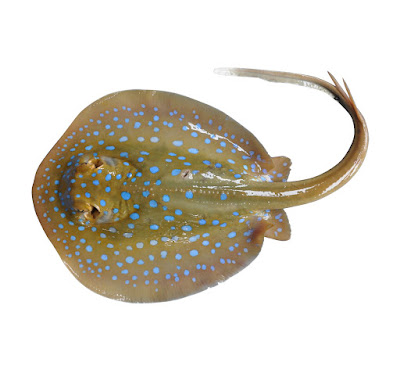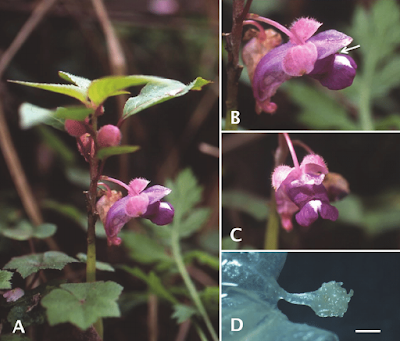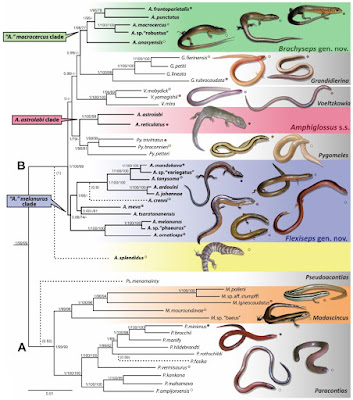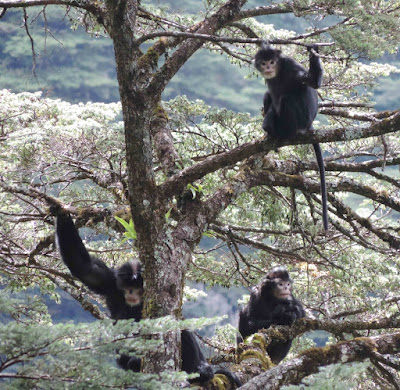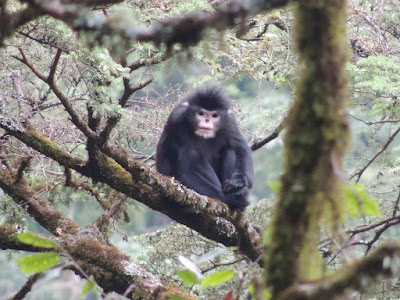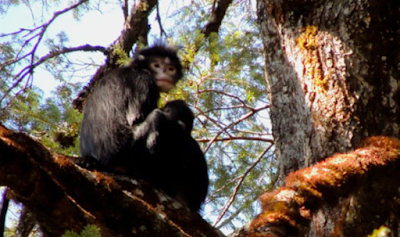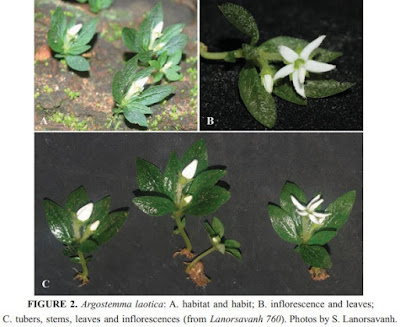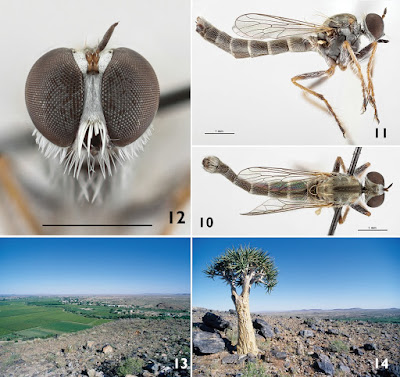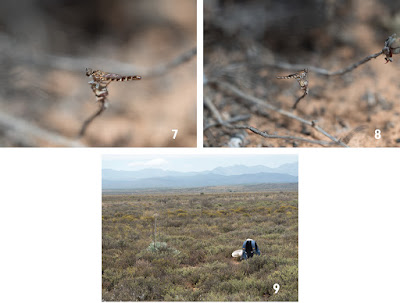[Most Recent Entries] [Calendar View]
Monday, December 19th, 2016
| Time | Event | ||||||
| 9:20a | [Ichthyology • 2016] Three New Stingrays (Myliobatiformes: Dasyatidae) from the Indo–West Pacific; Himantura australis, Taeniura lessoni & Telatrygon biasa Abstract Three undescribed stingrays were discovered as part of a broader revision of the family Dasyatidae that formed part of the Chondrichthyan Tree of Life project. This research forms part of a sequence of papers on rays aimed at describing unnamed species for inclusion in a multi-authored guide to rays of the world. The first part of this series focused on a redefinition of genera of the family Dasyatidae. The new Indo–West Pacific taxa are represented by separate genera from three dasyatid subfamilies: Himantura australis sp. nov. (northern Australia and Papua New Guinea), Taeniura lessoni sp. nov. (Melanesia) and Telatrygon biasa sp. nov. (Indo–Malay Archipelago). Himantura australis sp. nov., which belongs to a complex of four closely related reticulate whiprays, differs subtly from its congeners in coloration, morphometrics and distribution. Taeniura lessoni sp. nov. is the second species in a genus containing the widely-distributed T. lymma, which is possibly the most abundant stingray in shallow coral-reef habitats of the Indo–Pacific, with the new species apparently restricted to Melanesia. Taeniura lessoni sp. nov. is distinguishable by the absence of a distinctive pair of vivid blue longitudinal stripes on the dorsolateral edges of the tail which is one of the most distinctive features of T. lymma. Telatrygon biasa sp. nov. belongs to a small, recently designated genus of stingrays represented by four species in the tropical Indo-West Pacific. Telatrygon biasa sp. nov. differs from these species in morphometrics. The new species differs markedly from T. zugei in its NADH2 sequence. Telatrygon crozieri is resurrected as a valid northern Indian Ocean representative of the T. zugei complex. Keywords: Pisces, Dasyatidae, Himantura australis, Taeniura lessoni, Telatrygon biasa, Telatrygon crozieri, new species, Indo–West Pacific Peter R. Last, William T. White and Gavin Naylor. 2016. Three New Stingrays (Myliobatiformes: Dasyatidae) from the Indo–West Pacific. Zootaxa. 4147(4); DOI: 10.11646/zootaxa.4147.4.2 Taeniura lessoni - A New Species of Blue-spotted Stingray https://reefs.com/2016/08/05/taeniura-le | ||||||
| 12:39p | [Botany • 2015] Impatiens kingdon-wardii • A New Species from Mt. Victoria (Natma Taung), northwestern Myanmar
Abstract A new species, Impatiens kingdon-wardii Nob. Tanaka & T. Sugaw. (Balsaminaceae), is described and illustrated from Mt. Victoria (Natma Taung), northwestern Myanmar. This species is distinguished from any other species by the pink orbicular, densely pubescent lateral sepals, appearance of which is like two ears of the mouse, and upper lobes of lateral united petals with hairy club-shaped protuberance. Keywords: Balsaminaceae, Impatiens, Mt. Victoria, Myanmar, new species, Eudicots, Myanmar Nobuyuki Tanaka, Takeshi Sugawara, Mu Mu Aung and Jin Murata. 2015. Impatiens kingdon-wardii (Balsaminaceae), A New Species from Mt. Victoria (Natma Taung), Myanmar. Phytotaxa. 234(1); 90. DOI: 10.11646/phytotaxa.234.1.7 | ||||||
| 12:44p | [Herpetology • 2017] Extended Molecular Phylogenetics and Revised Systematics of Malagasy Scincine Lizards Highlights • A new phylogenetic hypothesis for Malagasy scincines based on an extended multilocus dataset. • Phenotypic comparisons corroborate divergent molecular patterns of evolution. • Three separate clades of Amphiglossus, characterized by different degrees of body elongation. • Amphiglossus redefined into three different genera based on combined molecular and morphological findings. Abstract Among the endemic biota of Madagascar, skinks are a diverse radiation of lizards that exhibit a striking ecomorphological variation, and could provide an interesting system to study body-form evolution in squamate reptiles. We provide a new phylogenetic hypothesis for Malagasy skinks of the subfamily Scincinae based on an extended molecular dataset comprising 8060 bp from three mitochondrial and nine nuclear loci. Our analysis also maximizes taxon sampling of the genus Amphiglossus by including 16 out of 25 nominal species. Additionally, we examined whether the molecular phylogenetic patterns coincide with morphological differentiation in the species currently assigned to this genus. Various methods of inference recover a mostly strongly supported phylogeny with three main clades of Amphiglossus. However, relationships among these three clades and the limb-reduced genera Grandidierina, Voeltzkowia and Pygomeles remain uncertain, mainly based on maximum likelihood and maximum parsimony estimates. Supported by a variety of morphological differences (predominantly related to the degree of body elongation), but considering the remaining phylogenetic uncertainty, we propose a redefinition of Amphiglossus into three different genera (Amphiglossus sensu stricto, Flexiseps new genus, and Brachyseps new genus) to remove the non-monophyly of Amphiglossus sensu lato and to facilitate future studies on this fascinating group of lizards. Keywords: Madagascar; Skinks; Phylogeny; Morphology; Taxonomy; Scincidae Jesse Erens, Aurélien Miralles, Frank Glaw, Lars Chatrou and Miguel Vences. 2017. Extended Molecular Phylogenetics and Revised Systematics of Malagasy Scincine Lizards. Molecular Phylogenetics and Evolution. In Press. DOI: 10.1016/j.ympev.2016.12.008 | ||||||
| 2:18p | [Mammalogy • 2016] The Critically Endangered Myanmar Snub-nosed Monkey Rhinopithecus strykeri found in the Salween River Basin, China
Abstract The Myanmar snub-nosed monkey Rhinopithecus strykeri was discovered in 2010 on the western slopes of the Gaoligong Mountains in the Irrawaddy River basin in Myanmar and subsequently in the same river basin in China, in 2011. Based on 2 years of surveying the remote and little disturbed forest of the Gaoligong Mountains National Nature Reserve in China, with outline transect sampling and infrared camera monitoring, a breeding group comprising > 70 individuals was found on the eastern slopes of the Gaoligong Mountains in the Salween River Basin. Given the Critically Endangered status of this primate (a total of < 950 individuals are estimated to remain in the wild), efforts to protect the relatively undisturbed habitat of this newly discovered population and to prevent hunting are essential for the long-term survival of this species. Keywords: China; Myanmar snub-nosed monkey; new population; Rhinopithecus strykeri; Salween River
Yin Yang, Ying-Ping Tian, Chen-Xiang He, Zhipang Huang, Shao-Hua Dong, Bin Wang, Guang-Song Li, Zuo-Fu Xiang, Yong-Cheng Long and Wen Xiao. 2016. The Critically Endangered Myanmar Snub-nosed Monkey Rhinopithecus strykeri found in the Salween River Basin, China. Oryx. DOI: 10.1017/S0030605316000934 New population of rare Myanmar snub-nosed monkey discovered in China https://news.mongabay.com/2016/12/new-po | ||||||
| 6:41p | [Botany • 2016] Argostemma laotica • A New Species (Rubiaceae) from Laos
Abstract Argostemma laotica, a new species from Laos, is described and illustrated. The species appears most similar to A. concinnum but differs in having pubescent stem, corolla and ovaries, oblique leaf base, shorter pedicel and smaller anthers which a dehiscence by an apical pore. The conservation status of this new species is vulnerable (VU D2). Keywords: Argostemma laotica, Rubiaceae, Eudicots Argostemma laotica is similar to A. concinnum Hemsley (1895: t. 2380) in perennial herb with tuber, acute leaf apex, terminal inflorescence, 5-merous flower, triangular calyx lobes, star-shped flower and capitate stigma, but differs in having pubescent stem (vs. glabrous), leaf base oblique (vs. acute or attenuate), corolla and ovaries pubescent (vs. glabrous), and shorter pedicels of 6–7 mm long (vs. 10–20 mm long) and smaller anthers of 2.2–2.5 mm long (vs. 5–6.5 mm long), which a dehiscence by an apical pore. Phenology:— Flowering in July. Etymology:— The specific epithet refers to the country in which the specimen was collected. Distribution and ecology:— Endemic to Laos and only known from the type locality in Xiangkhoang, growing on wet rock, along river, elevation ca. 200 m. Soulivanh Lanorsavanh and Pranom Chantaranothai. 2016. Argostemma laotica (Rubiaceae), A New Species from Laos. Phytotaxa. 270(3); 223–226. DOI: 10.11646/phytotaxa.270.3.7 | ||||||
| 11:30p | [Entomology • 2016] A Review of the Genus Trichoura Londt, 1994 with the Description of A New Species, Trichoura pardeos, from the Northern Cape Province of South Africa and A Key to World Willistonininae (Diptera, Asilidae) Abstract The South African assassin-fly genus Trichoura Londt, 1994 is reviewed. A new species, Trichoura pardeos sp. n., is described from the arid Karoo in north-western South Africa. A new key to all seven recognized species is provided and the distribution and phenology are discussed. The world fauna of Willistonininae is reviewed, a new taxon Sisyrnodytini tribe n. (type genus Sisyrnodytes Loew, 1856) is established for Ablautus Loew, 1866, Acnephalomyia Londt, 2010, Ammodaimon Londt, 1985, Astiptomyia Londt, 2010, Sisyrnodytes, and Sporadothrix Hermann, 1908 and photographs for all Willistonininae genera are provided. Keywords: Assassin flies, robber flies, Afrotropical, Nearctic, new tribe, new species  Etymology: Gr. Pardos m. – leopard + oros, -eos n. mountain. Named after the type locality of Tierberg Nature Reserve (Tierberg meaning tiger (= leopard) mountain). Distribution, phenology and biology: Known only from the type locality. Collected in February (Table 1). Little is known of the biology. Tierberg Nature Reserve is a small conservation area comprised almost entirely of a large rocky hill on the outskirts of Keimoes, a small town located on the north banks of the Gariep (= Orange) River which provides water for agricultural activities in what is otherwise an arid area of the country. Vegetation is sparse and dominated by succulents such as aloes (Figs 13–14). The flies were found resting on hard-baked ground and stones. Jason G.H. Lond and Torsten Dikow. 2016. A Review of the Genus Trichoura Londt, 1994 with the Description of A New Species from the Northern Cape Province of South Africa and A Key to World Willistonininae (Diptera, Asilidae). African Invertebrates. 57(2); 119-135. DOI: 10.3897/AfrInvertebr.57.10772 Assassins on the rise: A new species and a new tribe of endemic South African robber flies http://blog.pensoft.net/2016/12/06/assas |
| << Previous Day |
2016/12/19 [Calendar] |
Next Day >> |
